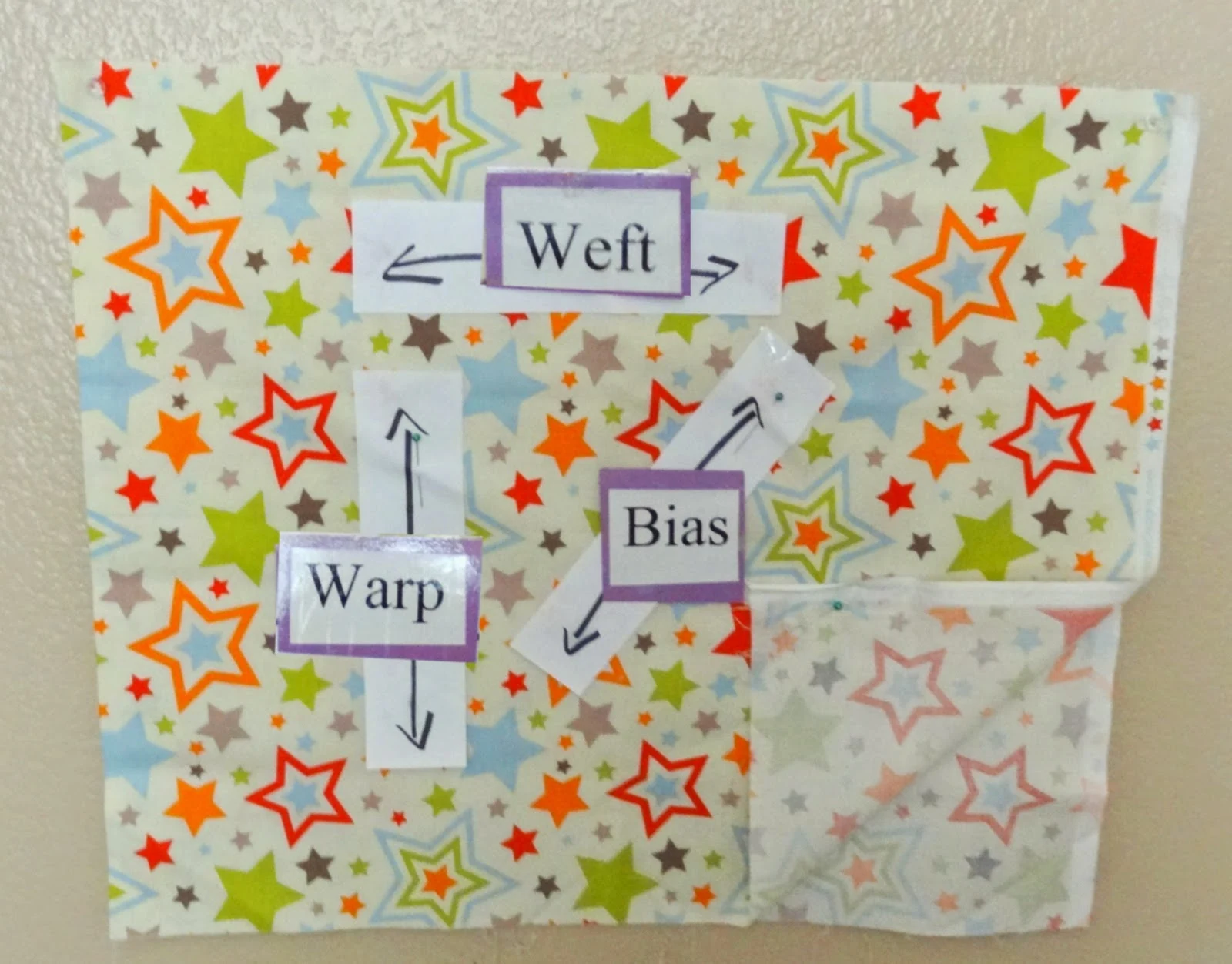One of my favorite parts of blogging is that I get to teach something that I love like sewing.
Sewing is a great skill to have, a wonderful way to share your creativity and the perfect form of therapy. More and more people are wanting to learn to sew every day. Which means they need a sewing 101 course.
This post contains affiliate links to products I recommend. I do make a portion off any you may purchase. See full disclosure here.
Today's lesson is understanding fabric grain and anatomy.
If you didn't know, I taught High School Family and Consumer Science, aka Home Economics, for 7 years. I loved it and do miss teaching some times.
One of my favorite courses to teach was sewing or fashion design. I love to sew and I love to teach others how to as well.
Naturally, I decided to put together a little sewing basics course right here on the blog. You'll learn things like the Essential Sewing Tools Every Sewist Needs and How to Thread a Sewing Machine.
Let's get started!!
Basic Fabric Grain and Anatomy
What is fabric anatomy?
Well, just like our body has specific anatomy or "parts". So does fabric.
Why do I need to know fabric anatomy?
Anytime you work with fabric it is important to know which direction to cut the pattern on the fabric.
Some pattern work best when cut on the bias. Others need to be on grain. So knowing your anatomy will keep you from cutting incorrectly.
What is grain of fabric?
To understand grain of fabric, we need to understand Warp and Weft. Warp yarns are the yarns that go from top to bottom or up and down. Weft yarns are those that go from left to right.
I always told my students to remember weft by saying "from weft to right". Totally silly, but you remember.
When cutting our patterns, most will be cut in the direction of the warp.
However, some may ask for you to cut on the bias. Bias is going diagonal on the fabric. A pattern cut on the bias will have a little more stretch and ease and be more flowy. This is common with skirt patterns.
If you don't recognize the words Warp or Weft, you might recognize Lengthwise or Crosswise. Same thing just different names.
When cutting out a pattern, the grainline needs to line up with the warp or weft yarns. To ensure that the fabric lays correctly when sewn.
Now, a few more anatomy terms:
Right Side: This is the side where the print of the fabric is located. If you don't have a printed fabric, you have to make sure to check which side is right.
On some fabrics it is easier, like satin it is the shiny side. On Velvet it is the side with the pile, or fuzzy side. But fabrics like denim may be hard to tell.
Wrong Side: This is the un-printed side of the fabric. Or the side that doesn't have the pile. Or the ugly side.
Raw Edge: Is the cut edge of the fabric. So when you go to the cutting counter and they cut the fabric, that is the raw edge.
Selvage: This is the edge of the fabric that is finished. Often times on fabrics they will have a 1/2" to 1" edge that may be white, or have the name of the manufacturer or even little holes in it. This is the selvage.
This is the side of the fabric that is connected to the machine as it is created. The selvage is important because this is how you decide where your Warp yarns are. They are parallel to your selvage.
Fold: The fold is just that. The folded edge of your fabric. If you purchase 44-45" fabrics they are usually folded on a bolt. 60"+ can be found rolled and therefore do not have a fold in them.
And there you have it. Basic fabric anatomy. So the next time someone says to put something on the bias, now you will know what the heck that means!














Great tips for the newby sewist! I've been there and have been so confused by all the terms. :) I'll pin to my sewing tips board. :)
ReplyDeleteNice one!!! It's becoming interesting. Thanks for sharing.
ReplyDeleteWhat a beautiful advice on how to read your fabric!
ReplyDeletegreat
ReplyDelete